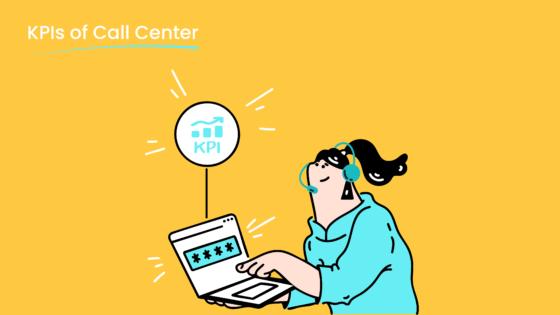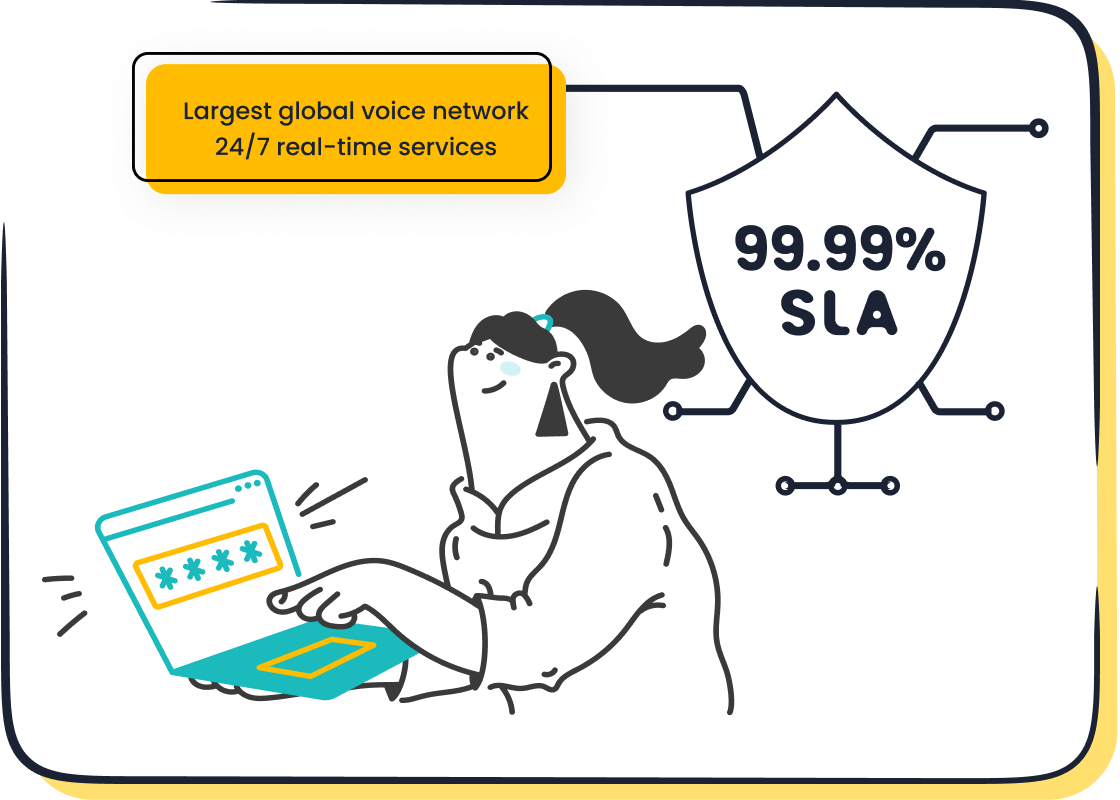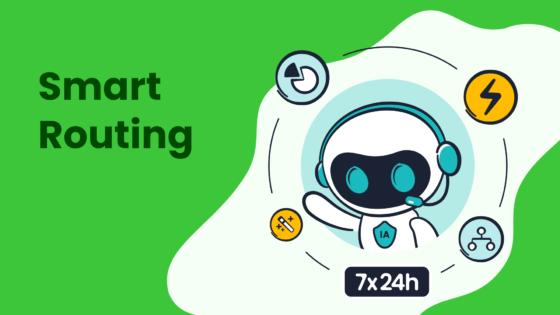Essential Agent Performance Metrics for Call Centers in 2025

In 2025, call centers rely on agent performance metrics more than ever to deliver exceptional customer experiences. These metrics aren’t just numbers—they’re the backbone of your contact center’s success. They help you measure how well your agents handle calls, resolve issues, and meet customer expectations. Did you know that 91% of customers won’t return after a bad experience? That’s why tracking essential agent performance metrics like First Call Resolution and Average Handle Time is critical.

When you focus on these metrics, you’re not just improving customer satisfaction. You’re also boosting operational efficiency and aligning your team with clear, measurable goals. Tools like Sobot’s Voice/Call Center make it easier to monitor and optimize these metrics in real time, ensuring your agents stay productive and your customers stay happy.
Understanding Agent Performance Metrics and Their Importance
What Are Agent Performance Metrics?
Agent performance metrics are measurable indicators that help you evaluate how well your call center agents perform their tasks. These metrics provide insights into various aspects of your operations, from how quickly agents respond to customer inquiries to how effectively they resolve issues. Think of them as the compass guiding your team toward better customer experiences and operational efficiency.
Some of the most commonly used call center KPIs include:
- First Response Time (FRT)
- Average Handle Time (AHT)
- Customer Satisfaction Score (CSAT)
- First Call Resolution (FCR)
- Net Promoter Score (NPS)
- Average Speed of Answer (ASA)
- Wrap-Up Time
Each of these KPIs serves a specific purpose. For example, FRT measures how quickly your agents respond to customers, while CSAT gauges the overall impact on customer satisfaction. By tracking these metrics, you can identify areas for improvement and ensure your team meets customer expectations.
Why Agent Performance Metrics Matter in 2025
In 2025, the importance of agent performance metrics has skyrocketed. Why? Because customer expectations are higher than ever, and businesses need to adapt quickly to stay competitive. Metrics like CSAT and FCR are no longer optional—they’re essential for maintaining customer loyalty and operational efficiency.
Here’s a quick breakdown of why these metrics matter:
| Metric Type | Importance |
|---|---|
| Customer Satisfaction | Ensures agents are well-trained and informed |
| Operational Efficiency | Helps fine-tune productivity |
| Training Opportunities | Identifies areas for improvement |

Metrics also help you uncover inefficiencies. For instance, if your AHT is too high, it might indicate that agents need better tools or training. Sobot’s Voice/Call Center can help you monitor these KPIs in real time, offering features like intelligent call routing and AI-powered analytics to streamline operations.
Aligning Metrics with Customer Expectations and Business Goals
To truly benefit from agent performance metrics, you need to align them with both customer expectations and your business goals. This alignment ensures that your KPIs not only improve agent performance but also drive meaningful results for your organization.
Here’s how you can achieve this:
- Define clear, measurable goals to give your agents a roadmap.
- Use real-time monitoring tools, like Sobot’s Voice/Call Center, to track progress and catch issues early.
- Leverage customer feedback to refine your strategies and improve service quality.
- Optimize workflows so agents can focus on complex issues rather than repetitive tasks.
- Foster a data-driven culture to encourage proactive problem-solving.
For example, Sobot’s unified workspace allows agents to manage calls and customer data seamlessly, reducing AHT and improving FCR. By integrating these tools into your operations, you can meet customer expectations while achieving your business objectives.
Key Agent Performance Metrics for Call Centers in 2025
First Response Time (FRT)
Definition and Industry Standards
First Response Time (FRT) measures how quickly your agents respond to customer inquiries. It’s a critical metric because customers expect immediate attention, especially in 2025, where speed defines satisfaction. Industry standards suggest that an ideal FRT should be under 20 seconds for phone calls and within 1-2 minutes for live chat. Falling behind these benchmarks can lead to frustration and reduced customer loyalty.
How to Reduce FRT Using Tools Like Sobot Voice/Call Center
Reducing FRT can feel challenging, but the right strategies make it manageable:
- Effective Training: Equip your agents with the skills to address concerns quickly.
- Technology Integration: Use tools like Sobot’s Voice/Call Center, which offers real-time monitoring and intelligent call routing. These features help you track FRT and eliminate delays.

- Channel Management: Ensure seamless experiences across platforms. Sobot’s unified workspace consolidates customer interactions, so agents can respond faster without switching systems.
Average Handle Time (AHT)
Balancing Efficiency and Quality
Average Handle Time (AHT) tracks how long it takes to resolve a customer issue, from start to finish. While efficiency is important, you don’t want to sacrifice quality. In 2025, AHT varies by industry, ranging from 1 minute and 2 seconds to over 4 minutes. The overall average is about 6 minutes. Striking the right balance ensures your agents resolve issues thoroughly while keeping customers satisfied.
Strategies for Optimizing AHT with Sobot's Unified Workspace
Here’s how you can improve AHT without compromising quality:
- Train agents to deliver fast, accurate solutions.
- Map the customer journey to identify inefficiencies.

- Use Sobot’s Unified Workspace to streamline workflows. This tool centralizes customer data and call management, helping agents handle tasks faster and more effectively.
Customer Satisfaction Score (CSAT)
Why CSAT Is a Leading Indicator of Success
Your customer satisfaction score (CSAT) reflects how happy customers are with your service. It’s a leading indicator of call center performance and business success. A good CSAT score ranges from 75% to 84%, while world-class scores exceed 85%. High CSAT correlates with better retention and revenue, making it a must-track metric for any call center.
Practical Ways to Improve CSAT with Sobot's AI-Powered Solutions
Boosting CSAT starts with understanding customer needs. Sobot’s AI-powered solutions, like its Voicebot, enhance interactions by providing quick, accurate responses. These tools also free up agents to focus on complex issues, improving both satisfaction and resolution rates. Monitoring CSAT regularly helps you identify areas for improvement, ensuring your call center stays ahead of customer expectations.
Adherence to Schedule
Operational Impact and Challenges
Adherence to schedule is one of the most critical call center metrics. It measures how well agents stick to their assigned shifts and tasks. When agents fail to adhere, it disrupts your service level performance and impacts customer satisfaction. But maintaining adherence isn’t always easy.
Here are some common challenges you might face:
- Unforeseen events like absenteeism, technical issues, or even weather disruptions.
- Fluctuations in call volume that make it hard to predict staffing needs.
- Agents’ personal preferences for shifts or days off, which can conflict with operational requirements.
Balancing empathy for your agents with the need to meet service level goals is tricky. However, tools like Sobot’s Voice/Call Center can help. Its real-time monitoring features allow you to track adherence and adjust schedules dynamically, ensuring you meet your service level performance targets without overburdening your team.
Tools for Improving Adherence, Including Sobot's Monitoring Features
Improving adherence starts with the right strategies and tools. Here’s what you can do:
- Train agents to understand the importance of adherence.
- Use Sobot’s monitoring tools to track agent statuses and identify gaps in real time.
- Recognize and reward agents who consistently meet adherence goals.
- Set realistic expectations and involve your team in the scheduling process.
Sobot’s Voice/Call Center offers advanced monitoring capabilities, helping you quantify the impact of missed shifts and optimize schedules. By leveraging these features, you can create a culture of accountability and efficiency, ensuring your agents stay on track and your customers stay satisfied.
Quality Assurance (QA) Scores
How QA Scores Reflect Agent Performance
QA scores are a vital part of monitoring call center performance. They provide a numerical snapshot of how well your agents handle customer interactions. These scores evaluate several aspects, including professionalism, emotional management, and compliance with company policies.
For example, a high QA score often indicates that your agents are delivering exceptional service and meeting organizational objectives. On the other hand, low scores can highlight areas where additional training or support is needed. Regularly reviewing QA scorecards ensures your metrics stay aligned with customer expectations and industry standards.
Best Practices for QA Monitoring with Sobot's Call Tracking
To improve QA scores, you need a robust monitoring system. Here are some best practices:

- Use Sobot’s call tracking feature to analyze agent interactions in real time.
- Develop a feedback loop by combining internal assessments with post-call customer surveys.
- Update QA scorecards regularly to reflect changing customer needs.
- Implement AI-driven sentiment analysis to gain deeper insights into call quality.
Sobot’s Voice/Call Center simplifies QA monitoring with its advanced analytics and call tracking tools. These features help you identify trends, address quality gaps, and ensure your agents consistently deliver top-notch service.
Strategies for Tracking and Improving Call Center Metrics
Leveraging Technology for Real-Time Monitoring
Benefits of AI and Analytics in Call Centers
Real-time monitoring has revolutionized how you can evaluate current performance levels in call centers. It provides immediate insights into agent activities and customer interactions, enabling you to address issues as they arise. Here’s how it benefits your operations:
- Agents stay updated on emerging issues, improving responsiveness.
- Supervisors can intervene during calls to ensure customer concerns are resolved effectively.
- Real-time metrics help reorganize teams based on skills, optimizing workflows for efficiency.
- Managers can identify top-performing agents for targeted training and rewards.
- Insights from real-time data improve processes and enhance customer satisfaction.
By implementing real-time monitoring and coaching, you can create a more dynamic and customer-focused environment.
How Sobot's Voice/Call Center Enables Real-Time Performance Tracking
Sobot’s Voice/Call Center takes real-time monitoring to the next level. Its advanced analytics and AI-powered tools allow you to track metrics like First Response Time and Average Handle Time in real time. Supervisors can monitor calls, provide immediate feedback, and even join conversations when necessary. This ensures agents deliver high-quality service while meeting your business goals. With Sobot, you can stay ahead of challenges and continuously drive improvement.
Training and Coaching for Continuous Improvement
Effective Coaching Techniques for Agent Development
Effective coaching is key to improving agent performance. Here are some proven techniques:
- Use QA automation to analyze every interaction and provide unbiased feedback.
- Offer real-time coaching prompts during calls to help agents navigate challenges.
- Conduct role-playing exercises to let agents practice skills in a safe environment.
- Encourage peer coaching and mentorship for collaboration and knowledge sharing.
- Implement micro-learning sessions to reinforce skills over time.
These strategies not only enhance agent confidence but also improve customer satisfaction.
Using Sobot's Data Analytics for Targeted Training
Sobot’s data analytics tools make it easy to identify training needs. Automated quality management reviews analyze 100% of interactions, highlighting inefficiencies and compliance gaps. Predictive analytics can pinpoint issues like long resolution times, helping you design tailored coaching programs. With Sobot, you can ensure your agents are always prepared to meet customer expectations.
Setting Clear Goals and Incentives
Aligning Metrics with Business Objectives
Setting clear goals is essential for aligning agent performance with your business objectives. Here’s how you can do it:
- Define specific objectives, like improving customer satisfaction scores by 10%.
- Use measurable metrics, such as reducing Average Handle Time by 2 minutes.
- Ensure goals are challenging yet achievable to keep agents motivated.
- Break larger goals into smaller, time-bound tasks to maintain focus.
When your goals align with your organization’s strategy, you create a roadmap for success.
Motivating Agents Through Incentive Programs
Incentive programs are a powerful way to boost agent morale and performance. Recognizing agents with rewards or formal acknowledgment increases engagement and reduces turnover. For example, offering bonuses for meeting CSAT targets or achieving high QA scores can inspire agents to excel. Sobot’s monitoring tools make it easy to track progress and implement effective incentive plans, ensuring your team stays motivated and productive.
Using Feedback Loops to Drive Improvement
Collecting Feedback from Customers and Agents
Feedback is the lifeblood of improvement in any call center. To truly understand what’s working and what’s not, you need to gather insights from both customers and agents. Customers can provide valuable perspectives on their experiences, while agents offer a behind-the-scenes view of operational challenges.
Here are some effective ways to collect feedback:
- Use customer surveys and questionnaires to gather structured insights.
- Add website pop-ups or in-app surveys to capture feedback while customers are engaged.
- Conduct post-contact surveys to understand how well issues were resolved.
- Encourage agents to share their thoughts during team meetings or through anonymous forms.
- Leverage speech analytics to analyze call recordings for hidden trends.
For example, Sobot’s Voice/Call Center makes it easy to collect feedback by integrating post-call surveys and analyzing operational data like first call resolution rates. These tools help you identify gaps and opportunities for improvement.
Implementing Feedback for Better Results
Collecting feedback is only half the battle. The real magic happens when you act on it. By creating a feedback loop, you can leverage customer feedback for continuous improvement and drive meaningful changes in your call center.
Here’s how you can implement feedback effectively:
- Analyze customer feedback to pinpoint service gaps.
- Involve agents in the quality assurance process to gain actionable insights.
- Develop an action plan to address recurring issues and improve customer experience.
- Regularly review the impact of changes to ensure they’re delivering results.
Sobot’s tools, like real-time monitoring and AI-powered analytics, simplify this process. They allow you to track the effectiveness of implemented changes and refine your strategies. For instance, if feedback highlights long wait times, Sobot’s intelligent call routing can help reduce delays and improve satisfaction.
By fostering a culture of continuous learning, you empower your team to experiment, adapt, and excel. This approach not only enhances customer experience but also boosts agent morale, creating a win-win situation for everyone involved.
The Future of Agent Performance Metrics in Call Centers
Emerging Trends in Call Center Metrics
Predictive Analytics and Proactive Support
Predictive analytics is transforming how you approach call center performance. By analyzing historical data, it helps you anticipate customer needs and optimize operations. For example, it can identify patterns in resolution times or highlight areas where agents might need additional training. This proactive approach ensures your team stays ahead of customer expectations.
Predictive metrics also pave the way for personalized experiences. Imagine tailoring every interaction based on a customer’s past behavior. With tools like Sobot’s AI-powered Voicebot, you can deliver these experiences seamlessly. Additionally, predictive analytics enables difficulty-adjusted quality assurance scores, ensuring fair evaluations for agents handling complex cases.
Personalization Metrics for Enhanced Customer Experience
Personalization is no longer optional—it’s a necessity. Metrics that track how well you personalize interactions can significantly impact customer satisfaction. For instance, omnichannel performance metrics ensure smooth transitions between platforms, while digital engagement metrics measure the effectiveness of your online interactions.
Sobot’s unified workspace simplifies this process by consolidating customer data across channels. This allows agents to provide tailored solutions without wasting time switching systems. As a result, you can enhance customer loyalty and satisfaction while improving operational efficiency.
The Role of AI and Automation in Performance Measurement
How AI Enhances Metric Accuracy
AI is a game-changer for measuring agent performance. It eliminates inconsistencies by analyzing real-time data and creating benchmarks that reflect real-world complexities. For example, Sobot’s AI tools can monitor call sentiment and flag issues instantly, ensuring accurate evaluations.
Continuous training keeps AI models updated, so they adapt to evolving customer needs. This means you can trust the metrics to capture the full scope of an agent’s capabilities. With AI, you’re not just tracking performance—you’re improving it.
Automation’s Impact on Agent Productivity with Sobot's AI-Powered Voicebot

Automation boosts productivity by handling repetitive tasks, freeing up agents to focus on complex issues. Sobot’s AI-powered Voicebot streamlines processes like call routing and data collection, reducing administrative burdens.
Real-time evaluations through automation also improve performance measurement. For instance, Sobot’s tools analyze every interaction, providing comprehensive data for quality assurance. This ensures you get a clear picture of your team’s productivity and areas for improvement. By leveraging automation, you can enhance both efficiency and customer satisfaction.
Tracking and optimizing agent performance metrics is essential for call centers to thrive in 2025. Metrics like CSAT and AHT not only improve customer satisfaction but also boost operational efficiency. By leveraging tools like Sobot Voice/Call Center, you can monitor real-time data, streamline workflows, and empower agents to focus on complex tasks. Continuous improvement, driven by AI and automation, keeps your team competitive and adaptable. Remember, fostering a data-driven culture and refining strategies ensures your agents deliver exceptional service while staying motivated and engaged.
FAQ
What are the most important agent performance metrics for call centers in 2025?
The key metrics include First Response Time (FRT), Average Handle Time (AHT), Customer Satisfaction Score (CSAT), and Quality Assurance (QA) scores. These metrics help you measure efficiency, customer satisfaction, and agent performance. Tools like Sobot’s Voice/Call Center make tracking and optimizing these metrics easier with real-time monitoring and AI-powered analytics.
How can I improve my agents’ adherence to schedule?
You can improve adherence by using real-time monitoring tools, like Sobot’s Voice/Call Center. It tracks agent activity and identifies gaps instantly. Recognize agents who meet adherence goals and involve them in scheduling decisions. This approach ensures accountability while maintaining team morale and operational efficiency.
Why is Average Handle Time (AHT) important for call centers?
AHT measures how long agents take to resolve customer issues. It’s crucial because it impacts both efficiency and customer satisfaction. High AHT might indicate inefficiencies. Sobot’s Unified Workspace helps reduce AHT by centralizing customer data and streamlining workflows, enabling agents to resolve issues faster without compromising quality.
How does Sobot help improve Customer Satisfaction Scores (CSAT)?
Sobot’s AI-powered solutions, like its Voicebot, enhance customer interactions by providing quick, accurate responses. These tools free up agents to focus on complex issues, improving resolution rates and satisfaction. For example, Agilent achieved a 95% CSAT score using Sobot’s omnichannel workbench and intelligent routing system.
What role does AI play in tracking agent performance metrics?
AI enhances accuracy by analyzing real-time data and identifying trends. Sobot’s AI-powered tools monitor metrics like FRT and call sentiment, offering actionable insights. This helps you improve agent performance and customer satisfaction while staying ahead of challenges in your call center operations.
See Also
Best Call Center Analytics Tools to Use in 2024
Leading Speech Analytics Solutions for Call Centers in 2024
Best Cloud Contact Center Solutions Available in 2024
Enhancing Call Center Efficiency Through Effective Monitoring